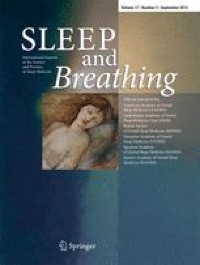Abstract
Purpose
Sleep apnea is a multifactorial illness which can be differentiated in various physiological phenotypes as a result of both anatomical and non-anatomical contributors (e.g., low respiratory arousal threshold, high loop gain). In addition, the frequency and duration of apneas, in the majority of patients with OSA, are influenced by sleeping position. Differences in characteristics between non-positional patients (NPP) and positional patients (PP) suggest another crucial phenotype distinction, a clinical phenotype focusing on the role of sleeping position on sleep apnea. Since this clinical phenotype distinction has therapeutic implications, further research is necessary to better understand the pathophysiology behind this phenotypic trait and to improve management of PP. Therefore, we suggest a standardized framework that emphasizes the role of sleeping position when reporting clinical and research data on sleep apnea.
Methods
We identified 5 key topics whereby a standardized framework to report on the role of sleeping position would be of added value: (1) sleep study data, (2) anatomical, morphological and physiological factors, (3) drug-induced sleep endoscopy (DISE) findings, (4) sleep apnea management, and (5) effectiveness versus efficacy of positional therapy in sleep apnea management. We performed a literature search to identify evidence to describe and support the rationale behind these 5 main recommendations.
Results
In this paper, we present the rationale behind this construct and present specific recommendations such as reporting sleep study indices (disease severity) and sleep time spent in various sleeping positions. The same is suggested for DISE findings and effect of treatment. Sleep study indices (disease severity), anatomical, morphological, and physiological factors in sleep apnea patients should be reported separately for PP and NPP.
Conclusion
Applying these suggestions in future research will improve patient care, assist in better understanding of this dominant phenotype, and will enhance accurate comparisons across studies and future investigations.




Δεν υπάρχουν σχόλια:
Δημοσίευση σχολίου